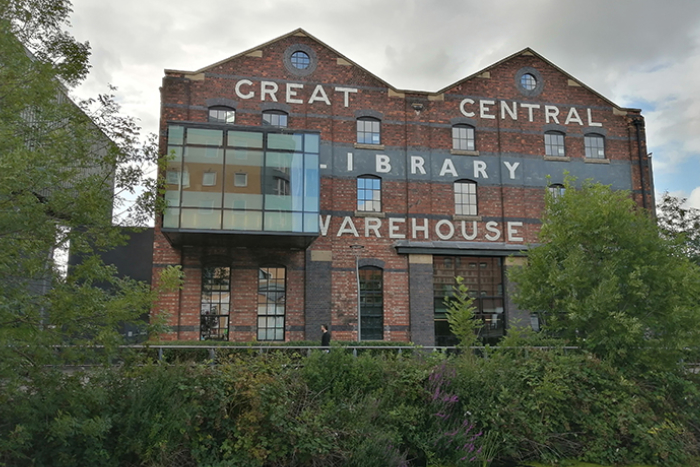
Great Central Warehouse
Andrew Walker from The Survey of Lincoln examines one of the University of Lincoln’s most prominent buildings.
For many buildings to survive they need to be flexible. The University of Lincoln’s library building is an example of such a structure which has had several different purposes in its relatively short existence.
Opened in 1907, the building was constructed for the Great Central Railway (previously, until 1897, the Manchester, Sheffield and Lincolnshire Railway Company). The depot and the accompanying sidings occupied an area of 70 acres to the south of Brayford Pool, now almost all part of the University of Lincoln’s campus.
Building began in 1905 and was undertaken by the firms of Thomas Wrigley of Manchester and Hughes & Stirling of Bootle, Liverpool. Construction materials were widely sourced with pine beams coming from Canada and steel transported to the site from Britain and abroad.
At the time of the construction of the building there was significant industrial action in Britain. Consequently, steel was difficult to obtain. Some of this material in the building was manufactured in Scunthorpe, some in Middlesbrough and, when steel was in extremely short supply, rails from Germany were used.
Inside the warehouse, much state-of-the art technology was employed. The Lincolnshire Echo reported on 4 January 1907 that six electric-powered hoists were installed, numerous electrical cranes were used and two electrical traversaries were constructed which allowed the ready movement of heavy waggons within the building without the need for railway engines.
Much of the development of the site was completed just in time for the Royal Show which took place in Lincoln on the West Common in June 1907. Substantial quantities of agricultural goods and animals were conveyed from here to the showground.
The warehouse’s waterside location was not coincidental. During its first 30 years, barges were able to access the building by an adjacent wharf, via a railway swing bridge on the River Witham, with a slow, manually-operated mechanism. The disruption the bridge caused to railway services when open ultimately led to its closure. The wharf was finally filled in during 1972.
At its opening, the building was known as the Great Central Goods and Grain Warehouse. During the early part of the First World War, in September 1914, newly recruited troops were stationed there. Although the prominent writing on the eastern end of the building displays the name ‘Great Central’, this railway company ceased to exist a century ago, when it became part of the Great North Eastern Railway in 1923, and then British Railways in 1948.
Upon the reorganisation of the railways in 1923, the goods and grain warehouse became the LNER’s principal Lincolnshire base for sack manufacture and repair, employing up to 60 workers.
British Rail transferred use of the warehouse to Richard Pattinson who opened a builders’ merchants in the building in March 1968 and latterly leased it to another building suppliers by 1988, Harcros. By the early 1990s, plans for the site’s future use were discussed locally, including as a hotel, an ice rink, a museum and apartments.
The building was empty from 1994 until it was taken over by the University of Lincoln. It reopened in September 2004, when it had been transformed into a library by the university’s architectural team, led by Nigel Stevenson. Marking its change of use, the central band of the building’s lettering has altered over the years from ‘Goods & Grain’, ‘Pattinson’, and ‘Harcros’ to its current descriptor -now nearly 20 years old - ‘Library’.
To find out more about The Survey of Lincoln and its work, see www.thesurveyoflincoln.co.uk.
